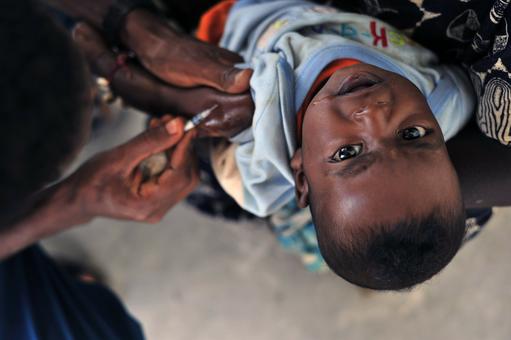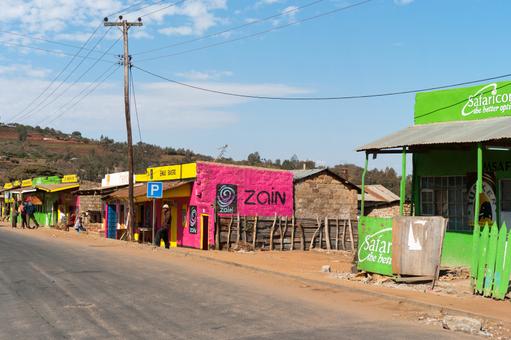Tag

Here's the paradox: cancer is the most preventable of all the chronic illnesses and yet the incidence of cancer growth in Africa and other developing regions of the world is of pandemic proportions, which is exacting a significant economic and social toll.
Reason 1: There is a massive difference between global spend on cancer and on infectious diseases. Although cancer claims more lives globally than HIV/AIDS, malaria and tuberculosis combined, it receives less than three percent of public and private funding from global health. The overwhelming amount goes to infectious diseases.
Reason 2: African countries lack financial clout to attack cancer. They lack epidemiological information to guide resource planning. They lack health workers. They lack the political will and they have competing healthcare demands.
Reason 3: Bad advice. For example, recently a well resourced UK global health advisory group travelled to a poorly resourced African country, which had one of the world's highest rates of cervical cancer mortality and recommended that it should improve its road transport infrastructure to enable health workers easier access to rural areas.
Narrowing the global medical knowledge gap
Sixty years ago, cervical cancer was one of the most common causes of death for western women. However, between 1955 and 1992, the cervical cancer mortality rate in affluent western countries declined by almost 70% as medical knowledge to detect and manage the disease improved. Similar outcomes are true of other forms of cancer to the point where cancer is now preventable and manageable in most developed economies.
According to Margaret Chan, Director General, World Health Organization, the exponential growth of cancer in Africa can be significantly reduced and managed by narrowing the medical knowledge gap between the develop world and African countries.
Notwithstanding, well resourced dedicated centres of global health in affluent developed countries are failing to narrow this gap and thereby failing to reduce and control the 12 million cancer cases that occur annually. If this gap continues over the next 20 years, cancer is expected to exact a significant toll in morbidity, mortality and economic cost particularly in Africa. By 2030, the number of new cancer cases each year is projected to increase to 27 million, cancer deaths to 17 million and much of the cancer burden will fall on poorly resourced African countries.
Mobile phones rather than tarmac
Narrowing the medical knowledge gap between rich and poor countries will neither be achieved by building more roads nor continuing traditional ways of communicating medical knowledge. Such means are slow, costly and ineffective. Narrowing the medical knowledge gap will only be achieved by widespread use of the most ubiquitous healthcare innovation: the mobile telephone.
Although operationally relevant, the mobile telephone is an underdeveloped healthcare application. However, in Africa, the implementation of any healthcare strategy to reduce the burden of cancer and other debilitating health conditions should not be contemplated without leveraging mobile telephony. Why? Because Africa has one of the fastest growing telecommunication infrastructures in the world.
According to a recent joint World Bank and African Development Bank Report there are 650 million mobile users in Africa, surpassing the number in the US and Europe. "In some African countries more people have access to a mobile phone than to clean water, a bank account or electricity," the Report says.
A recent Deloitte's Report suggested that between 2000 and 2012, mobile phone penetration in Africa increased rapidly from one percent to 54%. Today it is over 60%. The main catalyst for this explosive growth is youth. "The cell phone is their landline, ATM and email in one device. Cell phones are central to their life," says Teresa Clarke, CEO, Africa.com.
According to Maurice Nkusi from Namibia Polytechnic who designed a mobile phone-based curriculum, most African youths, "have never even used a computer, but the rapidity with which they master mobile telephony reflects the era in which they live".
Mobile telephony in Africa has narrowed divides between urban and rural, rich and poor and African youth today is the first generation to have direct access to mobile phones, which are used for communicating, transferring money, shopping, listening to the radio and mingling on social media. It is a relatively small step to integrate healthcare content on mobiles that would help prevent and manage cancer.
Africa internet use increases as costs fall
Internet prices in Africa are falling and speed is increasing thanks to fibre-optic submarine cables running along the east and west coasts of Africa and connecting many countries and millions of people.
The Eastern Africa Submarine Cable System (EASSy) is a 10,000km fibre-optic cable deployed along the east and south coast of Africa to service voice, data, video and internet needs of the region. It links South Africa with Sudan via landing points in Mozambique, Madagascar, the Comoros, Tanzania, Kenya, Somalia and Djibouti. The system also interconnects with multiple international submarine cable networks for onward connectivity to Europe, the Americas, the Middle East and Asia.
At a 2013 BRIC summit in South Africa, Andrew Mthembu, chairman, i3 Africa announced that EASSy is to be complimented by a new marine cable connecting 21 African countries with Brazil, Russia and China.
Along the West African coastline is a similar submarine fibre-optic cable, which links West African countries with Europe and brings ultra-fast broadband to a region from Seixal in Portugal through Accra in Ghana to Lagos in Nigeria and branches out in Morocco, Canary Islands, Senegal and Ivory Coast.
This existing 7,000km cable has been recently complemented by a France Telecom-led system, which uses high-speed fibre optic technology to link Europe with 18 countries along the west coast of Africa and provides the capacity to allow approximately 20 million ordinary videos and up to five million high definition videos to be streamed simultaneously, without any buffering.
Today, there are 84 million Internet-enabled mobiles in Africa, all of which can access data and rich media from the internet. By 2014, 69% of mobiles will have Internet access in Africa. In response to the burgeoning demand, African markets are rapidly transitioning from mobiles with limited data access to low-cost smartphones with access to the Internet. Chinese handsets are readily available in Africa for as little as US$20.
Takeaways
Previous HealthPad commentaries have described mHealth initiatives in Africa, but few western centres for global health have fully appreciated that medical knowledge has become mobile, digital and global. Further, they have not fully appreciated the telecommunications revolution that has taken place in Africa over the past decade. Such failures help to explain why the medical knowledge gap between the developed world and African countries has not been narrowed.
This failure is also an opportunity for centres of global health to take a lead in capturing and organising medical knowledge to assist in the management of cancer and other chronic diseases and then to leverage established telecommunications infrastructures to distribute that knowledge to where it is needed the most. What a pity that narrowing the medical knowledge gap was not a Millennium Development Goal.

|
|
|

Africa is sick. Ninety per cent of the world’s cholera cases occur in Africa. Meningococcal meningitis is epidemic in most African countries. Yellow fever is endemic in 23 African countries. Africa has more than 28 million HIV/AIDS cases and 75% of the world’s AIDS population live in sub-Saharan Africa. Of the one million annual malaria deaths, 90% occur in the same region. Measles are common throughout Africa and result in high levels of morbidity and mortality. Lassa fever accounts for about 0.4 million deaths each year and avian influenza is endemic in many African countries.
This is not the whole story. In addition to being plagued with infectious diseases, Africa has a neglected epidemic of chronic non-communicable disease (NCDs). Over the next decade the continent is projected to experience the largest increase in mortality rates from cardiovascular disease, cancer, respiratory disease and diabetes.
Although, international health agencies and national governments are beginning to recognize and confront the significant global burden of NCDs, its awareness in Africa is still relatively low and political leaders there have not shown much interest in NCDs and this has been reflected in the allocation of health budgets. This neglect compounds Africa’s healthcare and development challenges, since the projected rise in NCDs throughout the continent is expected to occur on a compressed timeline compared to high income countries and Africa has restricted capacity to respond to the magnitude of its disease burden.
International organisations have flagged the magnitude and the urgency of the challenge. Healthcare advice from numerous non government agencies in the developed world on ways to deal with Africa’s escalating disease burden is forthcoming. This has been especially the case over the past decade when humanitarian aid budgets have peaked. Agency recommendations have been high on overall strategy and low on cost effective and scalable means of delivering such strategy.
|
Most advice includes epidemiological surveillance, primary programmes that target healthy populations and secondary preventative programmes aimed at reducing complications in affected populations. All agencies agree that human resources are crucial to viable African health systems. Hitherto, human resources have been a neglected component of African healthcare. A common implementation strategy recommended and implemented by several non government agencies is to organise health workers from the developed world to spend time in African countries teaching the teachers. To assist such programmes, some agencies recommend that African governments build more roads to enable health workers to gain better access to rural areas where healthcare provision is poor or non-existent. Education is crucially important, but the key question is, how do you educate enough people to make a difference? Africa has a population of over one billion; about 15% of global population,but only 2% of global GDP and its population is projected to double by 2050. Africa is exposed to multiple health risks combined with inadequate preventative healthcare and education. Projected trends of Africa’s disease burden and consequent rates of morbidity and mortality highlight the inadequacy of some popular traditional response to Africa’s healthcare challenge. In addition to the enormity of its disease burden, Africa, which has weak health systems, also has significant long standing structural, logistic, human and organisational barriers to the implementation of well intended traditionalhealthcare programmes many of which focus on teaching the teachers. So, despite well intended traditional interventions, Africa’s disease burden continues to grow and its overall effect is likely to decrease productivity, lower competiveness, increase fiscal pressure, expand poverty and create greater inequity in most African countries. More scalable and effective solutions are required. These should build on Africa’s strength, which are her established and fast growing telecommunications networks and her relative absence of healthcare legacy systems. Current trends in disease prevalence and treatment costs will force African countries to make deliberate and innovative choices in order to address their disease burdens in sustainable and effective ways. Such choices are more likely to employ modern technology than to build more roads. In Africa, mobile penetration exceeds infrastructure development, including paved roads and access to electricity and the internet. According to the World Health Organization’s (WHO) Global Observatory for mHealth some 40 African countries are using mobile health services. |
|
Africa is the fastest-growing mobile telephone market in the world and the biggest after Asia. Over the past five years the number of subscribers on the Continent has grown some 20% each year. By the end of 2012 it is projected that Africa will have 735 million mobile subscribers.The nature of Africa’s mobilemarket is also changing. Today, smart phone penetration rate in Africa is estimated to be about 18%: almost one in five and projected to reach 40% by 2015. While patchy, mobile penetration rates in Sub Saharan Africa, where the disease burden is greatest, are not low and the rate of smart phone penetration is estimated to be about 20%. In 2007 Sarafaricom, a leading mobile phone network in Kenya, launched M-Pesa, a mobile phone‐based payment and money transfer service for people too poor to have a bank account. M-Pesa spread quickly and has become the most successful mobile phone‐based financial service in the developing world. Today there are some 17 million registered M-Pesa accounts in Kenya. It is only a small step to offer a mobile health information service for all M-Pesa account holders. Africa’s new highways to carry healthcare information are virtual rather than physical. They already exist, they are extensive and, over the course of the next five years, are projected to rapidly expand and improve. With such an infrastructure one teacher can educate millions of people, which is significantly more cost effective and sustainable than traditional healthcare programmes. Further, Africa will not be able to diagnose and treat its way out of its disease burden. Increasingly, healthcare programmes will need to emphasis prevention, alongside efforts to strengthen health systems to provide early diagnosis; targeted cost-effective and scalable treatments that are fiscally sustainable depending on countries’ epidemiological profile. Such solutions will need to fit complex, overstretched and under-resourced health systems; address the enormity of the escalating disease burden and bring about desired changes in specific African countries’ health systems. This cannot be achieved only by repeating traditional healthcare programmes delivered by non government agencies from developed countries. According to the International Telecommunications Union there are some 5 billion wireless subscribers in the world today and over 70% of these reside in low and middle income countries. In 2011, Africa held its first mobile health summit in South Africa and firmly put mobile telephony at the centre of improving healthcare in poor countries. A 2011 WHO global survey of the use of mobile telephony in healthcare; mHealth, reported that commercial wireless signals cover over 85% of the world’s population. Eighty three per cent of the 122 countries surveyed in the Report used mobile phones for free emergency calls, text messaging and pill reminders. Modern technologies have the scalability to provide the basis for Africa to develop country-congruent health policies that are locally applicable. Technological systems such as mobile telephony, the internet and biometric identification, which are appropriately implemented, have the capacity to empower individuals and encourage them to take care of their own health. Further, such technologies have the capacity to improve targeting, reduce fraud and increase access to healthcare. Technologically based healthcare strategies offer Africa an opportunity to leapfrog its ineffective traditional healthcare systems and begin to manage the enormity of its disease burden and, in turn, may benefit the whole world by demonstrating the benefits of patient centred healthcare. |

We have always been and always will be married to our own health. In the future, however, we will be taking greater responsibility for it. The British government is encouraging more people to use modern technology to increase control over their health. Under the new UK NHS Mandate launched on 14th November 2012 by Health Secretary Jeremy Hunt, patients will be encouraged to give feedback on the quality of their care, so others can then choose between hospitals. By 2015, modern communications technology is expected to play a substantially bigger role in the UK’s healthcare system and a significant proportion of patients will be booking GP appointments online and ordering repeat prescriptions over the internet. Launching The Mandate, Hunt said: “Never in its long history has the NHS faced such rapid change in our healthcare needs, from caring for an older population, to managing the cost of better treatments, to seizing the opportunities of new technology.”
The UK Mandate marks the beginnings of a redefinition of health and healthcare away from its focus on disease towards a focus on patients and individual wellbeing. A significant driver of this shift is the rising cost of care. In January 2012, Standards & Poors published a report suggesting that the creditworthiness of leading developed countries would be in jeopardy if they did not stem the escalating cost of healthcare. Highlighting the US, Germany, the UK and France, it said: “We project that healthcare costs for a typical advanced economy will stand at 11.1 per cent of GDP by 2050, up from 6.3 per cent of GDP in 2010.”
In the US, which is richer than other countries, the situation is particularly bad and Americans are willing to spend more on healthcare. In 2000 US healthcare was 13.8% of GDP, by 2010 it had increased to 19.8%. Over the past 40 years, healthcare costs in the US have been rising significantly faster than the overall economy or personal incomes, a trend that cannot continue forever. Americans pay hospitals and doctors more than most patients do in other rich countries. US insurance incentives entice doctors and patients to use expensive medical services more than is often warranted. Americans rely more on costly specialists, who tend to overuse advanced imaging technologies and resort to costly surgical or medical procedures a lot more than doctors do in other countries. This suggests that wealth as well as aging is a significant driver of health costs.
As advanced industrial economies become wealthier, their healthcare spends converge with that of the US. According to Stuart Fletcher, the CEO of BUPA, British patients are increasingly bi-passing health insurance companies and paying private hospitals and specialists directly and specialist fees are continuing to rise. Rising fees and the relative lack of competition and transparency among private hospitals slows the rate that people take up private health insurance. In the medium-term this, says Fletcher, will create an “affordability crunch”. BUPA’s European and US business saw half year profits for Europe and North America fall by 22%. BUPA has responded to the changing market conditions by offering patients more power and greater choice. BUPA is trialling a new scheme where it acts as a broker for patients, helping them negotiate the best price and quality of treatment on 70 common conditions.
This is not only an issue for health insurers. In most countries healthcare expenditure is rising twice as fast as economic growth. This suggests that unless something is done to change the situation, healthcare systems are economically unsustainable and this will inevitably lead to healthcare programmes being either reduced or cut. Healthcare costs are set to escalate further because of the worldwide pandemic of chronic non-communicable diseases: cancer, diabetes, heart and respiratory conditions. Margaret Chan, the Director General of the World Health Organization views chronic non communicable diseases as “The biggest threat to the 21st Century”. Today, 60% of all deaths are due to these diseases: twice the number due to communicable diseases. However, this is not only about mortality, it is also about morbidity and dependency and the economic impact on both treatment and lost productivity, which has been estimated to be nearly US$50 trillion over the past 20 years.
Richard Saltman, Professor of Public Health at Emory University in the US, said a key theme as governments seek to curtail healthcare costs, would be “rethinking the balance between collective and individual responsibility.” This raises the prospect in many countries of people being expected to take greater charge of their own health and this is what the new UK NHS Mandate is nudging towards.
Patient focused healthcare means a shift away from reactive medicine comprised of diagnosis and treatment. Reactive healthcare systems primarily treat patients after the onset of disease; incur significant costs and usually do not restore patients to perfect health. To be sustainable, healthcare systems will have to go further than the new UK NHS Mandate. They will have to be redefined away from prevention and treatment of illness to one of promoting well-being. This places a greater importance on mental illness and on complementary and traditional medicine and shifts the emphasis away from hospitals and clinics towards less traditional places including the home where individuals will be better positioned to take control of their own health.





